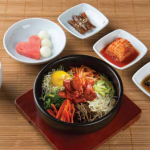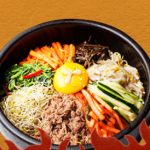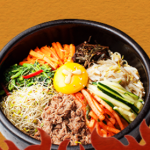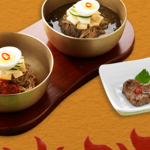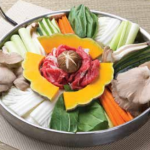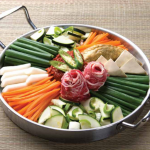Korean cuisine has emerged as one of the most popular and beloved food cultures in the world. Renowned for its unique blend of flavors, colors, and aromas, traditional Korean dishes have tantalized taste buds for centuries. In this article, we will delve into the fascinating world of Korean cooking techniques and methods, unlocking the secrets behind preparing mouthwatering, authentic Korean meals.
Introduction: A Gastronomic Adventure Awaits!
Taste the Essence of Culture
Siapa yang suka makanan Korea di sini? If you enjoy Korean food, get ready to embark on a gustatory adventure through the rich tapestry of Korea’s culinary heritage. From kimchi to bibimbap, bulgogi to dakgalbi, Korean cuisine offers an array of flavors bound to satisfy every epicurean craving.
Korean cooking embodies the essence of the country’s vibrant culture, reflecting its history, geography, and agriculture. Combining fresh ingredients, cooking techniques passed down through generations, and a touch of creativity, Korean dishes showcase an explosion of flavors and textures that will leave you craving for more.
The Makings of Authentic Korean Dishes
Building the Foundation: Fermentation and Preservation Techniques
The secret to authentic Korean gastronomy lies in the art of fermentation and preservation. These methods not only transform common ingredients but also infuse them with rich umami flavors. Kimchi, one of Korea’s most iconic dishes, is a prime example of the alchemy achieved through fermentation. Cabbage, radishes, and other vegetables are meticulously salted, seasoned, and preserved, resulting in a complex burst of spicy, tangy, and slightly sour flavors.
Intense Heat and Bold Flavors: Grilling in Korean Cuisine
Grilling, or ganggang, is a vital technique in Korean cooking. It imparts a smoky char and enhances the natural flavors of various meats, seafood, and vegetables. Bulgogi, thinly sliced marinated beef, is often grilled to perfection, delivering tender and succulent bites. And who can forget the sizzle and aroma of samgyeopsal, the mouthwatering grilled pork belly? Grilling adds depth and texture, making it a cornerstone of Korean culinary prowess.
One-Pot Wonders: Mastering the Art of Stews
Stews, known as jjigae, play an integral role in Korean cuisine. These hearty and comforting dishes combine an assortment of ingredients, resulting in a harmonious medley of flavors. The iconic kimchi jjigae showcases the perfect balance of spiciness from fermented kimchi, tender tofu, and savory pork. Another beloved delicacy, doenjang jjigae, demonstrates the versatility of soybean paste in creating a savory, umami-packed stew.
Embarking on the Korean Culinary Journey
With a plethora of traditional Korean dishes to explore, it’s time to roll up our sleeves and savor the world of Korean flavors. Whether you are a seasoned chef or a culinary enthusiast, trying your hand at Korean cooking will undoubtedly leave you with a gratifying and delicious experience.
So, gather your cooking utensils and let’s journey through the incredible techniques and methods used in preparing these Korean delights. Bridging the gap between cultures can be as simple as stepping into your kitchen and embracing the artistry of Korean cuisine.
Frequently Asked Questions
1. Can I substitute ingredients in traditional Korean recipes?
Absolutely! Korean cooking is adaptable and open to interpretation. Feel free to substitute ingredients based on your preferences or dietary restrictions. However, keep in mind that certain ingredients, like gochujang (red pepper paste) and doenjang (soybean paste), contribute unique flavors that are integral to traditional Korean dishes.
2. Are Korean dishes typically spicy?
While Korean cuisine is known for its bold and spicy flavors, not all Korean dishes are spicy. Many recipes showcase a delicate balance of sweet, salty, and savory flavors, making them milder and suitable for various palates.
3. How can I incorporate vegetarian or vegan options into Korean cooking?
Korean cuisine offers a multitude of vegetarian and vegan dishes. Tofu, mushrooms, and a variety of vegetables are commonly used as substitutes for meat. Explore recipes like bibimbap or japchae, and enjoy the vibrant flavors of Korean cuisine without compromising your dietary preferences.
4. Where can I find authentic Korean ingredients?
Authentic Korean ingredients can be found in Korean grocery stores or online. If you are unable to access specialized stores, you can often find basic ingredients in international sections of larger supermarkets. Experimenting with unique ingredients will undoubtedly elevate your Korean cooking game.
5. Are there any regional specialties in Korean cuisine?
Absolutely! Just like any other cuisine, Korea boasts a plethora of regional specialties. From the seafood-inspired dishes of coastal regions like Busan and Jeju to the hearty flavors of North Korean cuisine, each region offers its own unique twist on traditional Korean food.
Embark on your culinary journey and discover the wonders of Korean cuisine. Dive into the art of fermentation, embrace the flavors of grilling, and immerse yourself in the world of rich stews. With each dish, you’ll unveil a story that connects generations and transcends borders. So, gather your ingredients, fire up your stove, and unleash your inner Korean chef.

